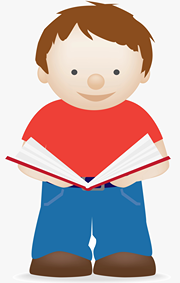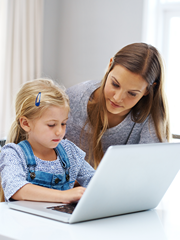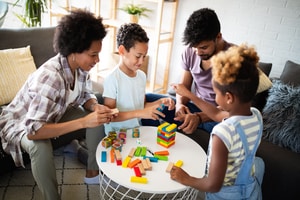How Can a Reading Program Help Your Child Advance Beyond the School Curriculum?
Reading programs can be a powerful tool to help children excel beyond their school curriculum. These programs offer structured approaches to enhance literacy skills, vocabulary, and comprehension. A well-designed reading program can accelerate a child’s learning, introducing advanced concepts and challenging texts that may not be covered in regular classroom settings.
Many reading programs incorporate diverse materials and interactive elements to keep children engaged. They often include age-appropriate books, online reading classes, and tailored exercises that adapt to a child’s progress. This personalized approach allows students to move at their own pace, tackling more complex material as they grow more confident in their abilities.
Parents play a crucial role in supporting their child’s reading development outside of school. By participating in reading programs, they can gain insights into their child’s strengths and areas for improvement. This knowledge enables parents to provide targeted support and create a home environment that fosters a love for reading and continuous learning.
Key Takeaways
- Reading programs can significantly enhance a child’s literacy skills beyond standard curriculum
- Personalized approaches in reading programs cater to individual learning needs and paces
- Parental involvement in reading programs supports continuous learning at home
Understanding the Impact of Enhanced Reading Programs
Enhanced reading programs provide targeted interventions to improve key literacy skills. These programs focus on developing phonemic awareness, fluency, vocabulary, and comprehension strategies.
Building Phonemic and Phonological Awareness
Phonemic awareness is the ability to identify and manipulate individual sounds in spoken words. Enhanced reading programs use activities like sound blending and segmentation to strengthen this skill.
Phonological awareness involves recognizing larger sound units like syllables and rhymes. Programs may incorporate word games, rhyming exercises, and sound manipulation tasks.
These foundational skills help children decode unfamiliar words and improve spelling. As students practice, they develop automaticity in recognizing sound-letter relationships.
Improving Fluency and Vocabulary
Fluency refers to the ability to read accurately, quickly, and with proper expression. Enhanced programs often use repeated reading techniques and timed passages to boost fluency.
Students may practice reading aloud, focusing on pace and intonation. Paired reading with a partner can also enhance fluency skills.
Vocabulary expansion is crucial for comprehension. Programs may introduce new words through context, word families, and root analysis. Students learn to use context clues and word parts to determine meanings.
Developing Reading Comprehension
Reading comprehension involves understanding and interpreting text. Enhanced programs teach specific strategies like predicting, questioning, and summarizing.
Students learn to activate prior knowledge before reading and monitor their understanding during reading. They practice identifying main ideas and supporting details.
Programs may use graphic organizers to help students visualize relationships between concepts. Discussions and written responses allow children to demonstrate and deepen their comprehension.
By explicitly teaching these skills, enhanced reading programs help students become more confident and capable readers across all subject areas.
Tailoring Programs to Individual Needs
Reading programs can be customized to address specific learning needs and challenges. This personalized approach ensures each child receives targeted support for optimal progress.
Addressing Reading Difficulties and Dyslexia
Reading programs often incorporate strategies to help children with dyslexia and other reading difficulties. These may include multisensory techniques, phonics instruction, and sight word recognition exercises. For dyslexic students, programs might emphasize letter-sound relationships and decoding skills.
Some programs use specialized fonts or color-coding to make text more accessible. Others provide text-to-speech features to support comprehension. Frequent practice with decodable texts helps build fluency and confidence. Programs may also offer tools for breaking down longer words into manageable parts. This assists students in tackling more complex vocabulary as they advance.
Audiobooks are a powerful tool that can support children with dyslexia, or any child who struggles with reading, by allowing them to follow along with the text as they listen.
Support for At-risk and Struggling Readers
At-risk and struggling readers benefit from intensive, targeted interventions. Reading programs often provide additional support through small-group or one-on-one instruction. These sessions focus on foundational skills like phonemic awareness and fluency.
Programs may use leveled texts to match students’ current abilities. This allows children to experience success while gradually increasing difficulty. Vocabulary-building exercises and comprehension strategies are integrated to boost overall reading skills.
Some programs incorporate games and interactive elements to maintain engagement. Regular assessments help identify areas needing extra attention. This ensures struggling readers receive timely support to close achievement gaps.
Monitoring Progress and Adjusting Instruction
Effective reading programs include built-in assessment tools to track student progress. These may involve brief, frequent checks or more comprehensive evaluations. Data from these assessments guides instructional decisions and program adjustments.
Progress monitoring allows teachers to:
- Identify areas of improvement
- Recognize persistent challenges
- Adjust instruction as needed
- Set achievable goals
Programs often provide detailed reports on student performance. This information helps educators tailor instruction to individual needs. Some systems use artificial intelligence to analyze progress and suggest personalized learning paths.
Flexibility is key in these programs. As students show mastery in certain areas, the program adapts to introduce more challenging content. This ensures continuous growth and prevents stagnation in the learning process.
Conclusion
A well-designed reading program can significantly enhance a child’s academic and personal growth beyond the standard curriculum. By exposing students to diverse texts and ideas, these programs can inspire them to read by helping with vocabulary expansion, and improved comprehension skills. Regular independent reading also cultivates a lifelong love of learning and intellectual curiosity.
The benefits extend far beyond the classroom, equipping children with valuable tools for future success. As parents and educators, encouraging participation in structured reading initiatives can provide children with a strong foundation for continued academic excellence and personal development.










